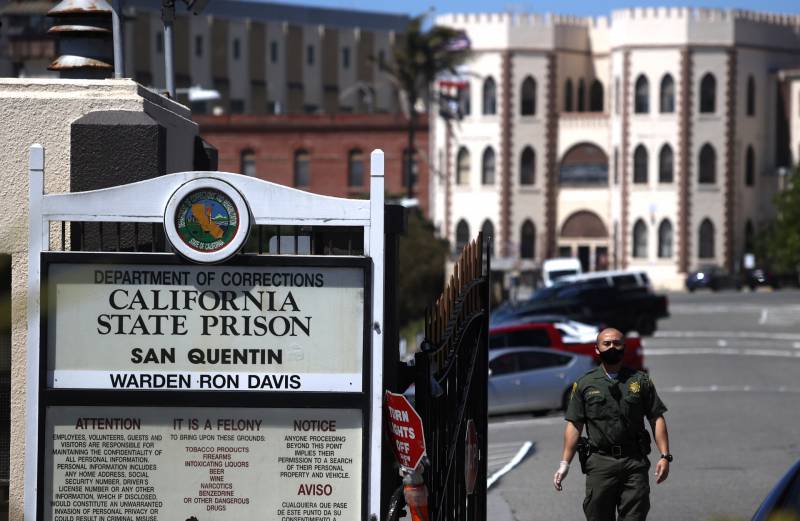Updated 1:30 p.m., Friday
San Quentin, California’s oldest state prison, and among its most notorious, will be transformed into a rehabilitative facility, where incarcerated people at lower risk of misconduct can receive education and training in preparation for their release, Gov. Gavin Newsom announced Friday.
Under the proposal, the Marin County lockup, which currently incarcerates about 3,900 people, including 546 on death row, will be transformed by 2025 into what Newsom hopes will be a world-class rehabilitation center based loosely on a Scandinavian model of incarceration.
“We want to be the preeminent restorative justice facility in the world — that’s the goal,” Newsom said Friday, during a visit to the prison, which he said will be renamed the San Quentin Rehabilitation Center.
Full details of the plan were not immediately clear, but Newsom said it would build on the innovative programs San Quentin is already known for, such as an accredited junior college and an award-winning newspaper and podcast.
The new direction — which Newsom dubbed the “California Model” — will be aimed at ensuring people inside the prison receive the tools and resources they need — from therapy to education and job training — to succeed in the outside world and steer clear of additional criminal behavior, he said.
The transformation will be data-driven, Newsom said, and inspired by “wildly successful” approaches in places like Norway, which has one of the lowest recidivism rates in the world.
In maximum-security Norwegian prisons, cells often look more like dorm rooms with additional furniture such as chairs, desks and even TVs, and incarcerated people have access to kitchens and activities like basketball.
The announcement comes four years after Newsom declared a moratorium on the death penalty in California, with all remaining people on San Quentin’s death row slated to eventually be transferred to other prisons in the state.
“Sentences are not being changed, I want to make that crystal clear,” said Newsom, a staunch opponent of the death penalty. He noted that those currently on San Quentin’s death row will be assessed individually to determine risk of violent behavior, with the goal of integrating them all into the general prison population by the end of 2024.
California’s prison population has been falling for years, the result of criminal justice reforms instituted after the U.S. Supreme Court in 2011 ordered the state to slim down its overcrowded lockups. Newsom already shut down one prison in 2021, with a second scheduled to shutter this summer and a third set to close by 2025.
